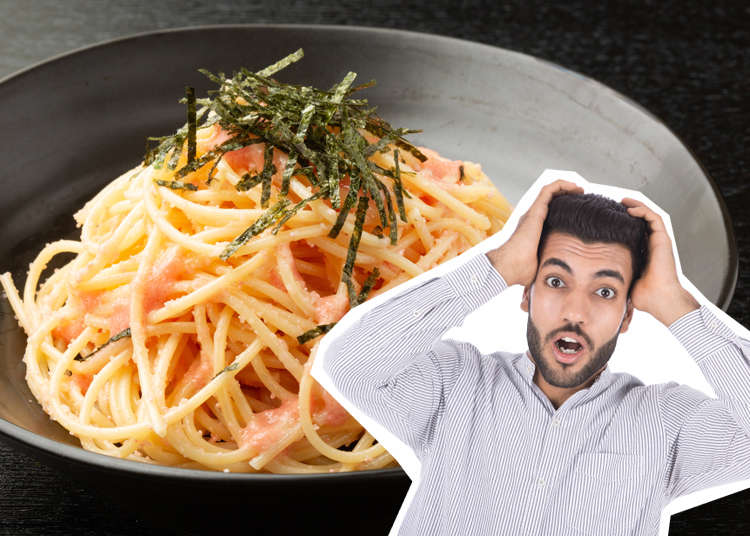
'It's Not Bad But...' Italian Reveals 9 Quirky Ways Japan Changed Italian Food
- Written by: Lucio Maurizi
Italian food is probably one of the most popular worldwide, and of course, in Japan as well. While the dishes of the Mediterranean peninsula have been adopted by many countries, some of the most curious adaptations can be found right here, in the Land of the Rising Sun.
As an Italian, like many of my compatriots, I'm very fond and even proud of Italian food. That is probably because it's deeply rooted in the country's culture. There are so many dishes tied not only to the country but to specific regions, or even cities, making food very much part of our heritage.
That being said, though, it's important to remember that all dishes, when prepared abroad, may get changed to adapt to the local cuisine, making for (sometimes) even more interesting and equally as delicious dishes. Here I’ll look at nine popular Italian dishes in Japan and their counterparts in Italy!
1. Pasta Carbonara
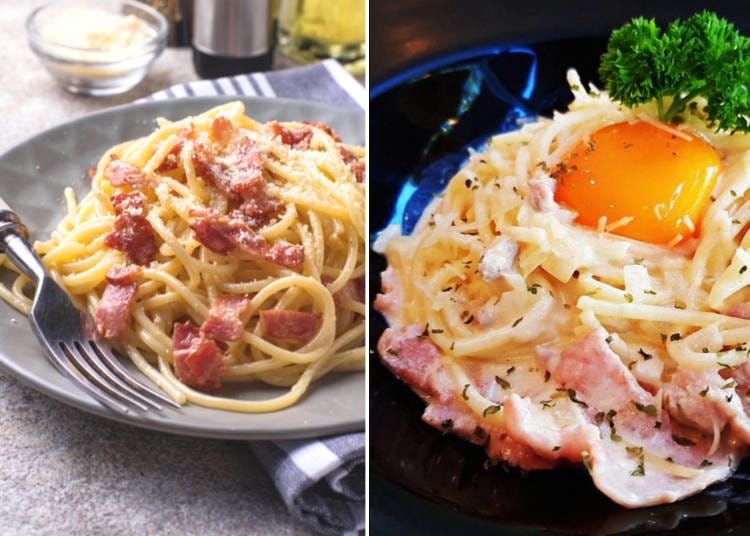
Pasta Carbonara, or simply carbonara, is one of the most popular dishes in Italy and Japan.
The dish originated in Rome and spread throughout the whole country, and even within Italy, people prepare it differently from region to region. That's why it's no surprise that Japan created its own version of the dish.
In Italy, carbonara is prepared by beating raw eggs thoroughly while lightly frying onions in a pan. Pecorino and parmiggiano (parmesan cheese) are then added to the eggs along with pepper. Guanciale or pancetta (typical Italian cured pork meat resembling bacon only in appearance) are then added to the frying pan. The pasta used is spaghetti or rigatoni (although technically, almost any pasta can be used).
The dish is simple to prepare, but it requires having a good eye when it comes to the quantities of the various ingredients to avoid making the pasta too dry or soupy. If prepared properly, the dish is creamy, flavorful, and satisfying (Depending on the region or the person preparing it, only one between pecorino and parmiggiano may be used; there may be no onions or pepper, and a little bit of milk may be added to the eggs to make the sauce less dense).
In the Japanese version, the creaminess is achieved by adding cooking cream to the pasta. The eggs are often simply placed on top of the dish and mixed only after serving. Bits of bacon replace pancetta and guanciale, and there may or may not be onions.
The Japanese dish is less strong in flavor, and admittedly it presents itself in a way that would scare most Italian people. The dish tastes extremely differently in the preparation and the ingredients used (while some cheeses and meats are everywhere in Italy, the same kind of products are much more a rarity in Japan, and often not of the same quality that you’d find domestically).
2. Neapolitan Pasta
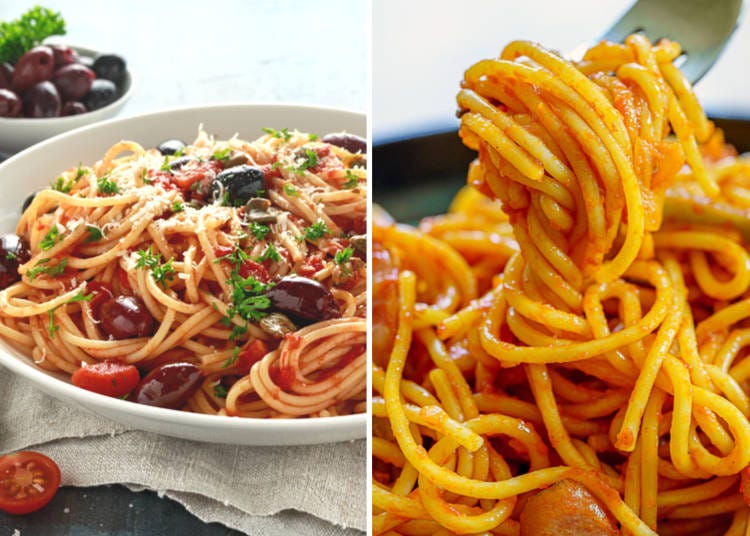
An Italian like me may consider “wrong” when it comes to pasta is in this dish. This is not to say that the dish is bad, but it's definitely antagonistic to what the average Italian would consider a “good” pasta.
Neapolitan pasta is likely the best-known pasta dish in Japan. Ironically, despite being named after one of the most famous Italian cities, it does not exist in Italy.
When saying “pasta Napoletana” in Italy, you're actually referring to several different dishes (close to one thousand, in fact).
The Japanese “Napoletan (or Naporetan) pasta” seems to have originated in Yokohama, and it's a spaghetti dish prepared with a sauce of tomato paste, ketchup, small mushrooms, wieners, onion, green peppers, and tabasco sauce.
Think what you will of this dish, but it’s definitely unique. Just don’t expect to find anything even remotely similar in Italy.
3. Pizza
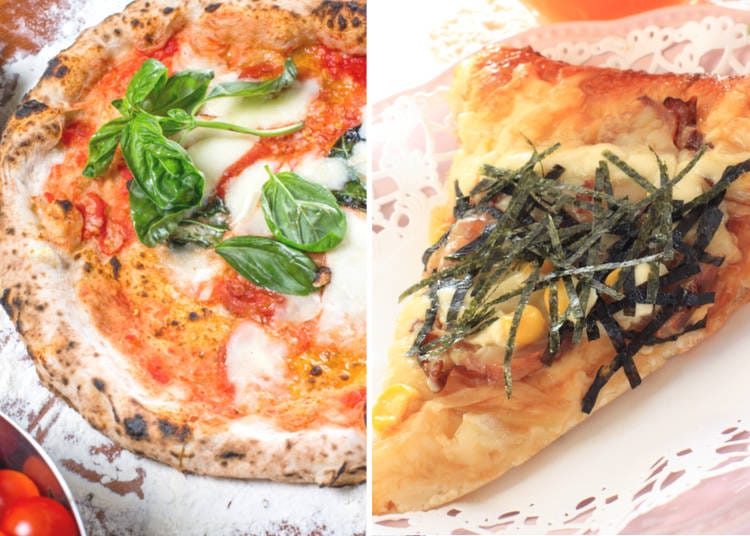
Pizza is so widely prepared nowadays that to some people, it may not even be a typically Italian dish. Ask people from New York, or Chicago, for example.
Italian pizza is usually divided into two categories: Napoletana (Neapolitan) and Romana (Roman). This doesn't mean that either variety can be found only in the city that it's named after. They are simply different ways to prepare pizza, where the Neapolitan one is smaller but thicker and softer, and the Roman one is larger, thin, and equally as soft and crunchy.
Japanese pizza resembles more American Pizza than it does Italian, but it's generally smaller, and what sets it apart is the toppings that are often used.
The toppings used in Italy or Japan are too many to list, but here are some unique Japanese ones that are almost impossible to find in Italy (unless a restaurant or a fast-food style pizzeria in Italy creates some unique recipes):
・Pesto Pizza (Using a very famous Italian pasta sauce as a topping)
・Shrimp (Usually garnished with mayonnaise)
・Corn Pizza (More popular than you would imagine)
Aside from the toppings, a major difference between Italian and Japanese Pizza lies in the dough. In Italy, the dough is usually prepared at least 24 hours before it's used. (This is what makes Italian pizza generally lighter and easier to digest.) For Japanese pizza, like its American counterpart, the dough is used almost immediately after being prepared.
Among pizzas, one that is very similar in both countries is the quattro formaggi (four kinds of cheese), but keep in mind that in Japan, this pizza is often served with honey, so if you don’t like the idea, make sure to ask for a no-honey version.
4. Pasta all'arrabbiata

One of the staple dishes in Italy, this is also a well-known pasta in Japan. In most cases, in its country of origin, this dish is prepared with penne, a quality of short pasta.
In its Italian version, this simple dish is prepared with a sauce of garlic, parsley, tomatoes, spicy dry red peppers, and olive oil. Penne all'arrabbiata is a spicy (sometimes very) dish, giving credence to its namesake (“all'arrabbiata” means “angry style”).
The Japanese version of this dish is not excessively different from the original, but it has a few distinctive features. First of all, it's prepared with spaghetti. Now, unless you're Italian, this doesn't seem like much of a difference. Still, if you happen to be, this might already strike you as very off (Italy sports hundreds, if not thousands, of different kinds of pasta, and many sauces are prepared specifically for just a few of them).
The name is also different changing from “all'arrabbiata” to simply “arrabbiata” (lit. “angry”).
Like in the Italian version, spicy peppers are used (chili peppers), as well as tomato sauce and garlic, but on top of that, bacon, parmesan cheese, and at times eggplant, are added.
5. Risotto/Pasta alla pescatora (Pasta Pescatore)
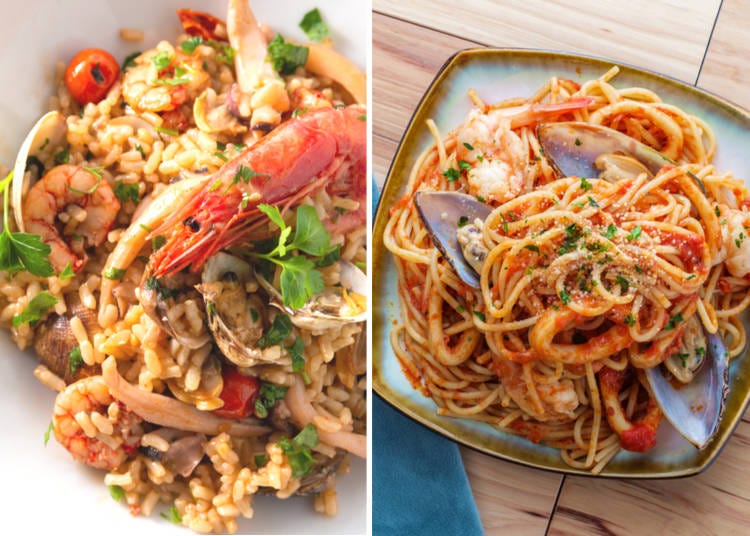
The Italian name for this dish, risotto alla pescatora could be loosely translated into “risotto fisherman style.” While in Italy, the same kind of sauce could also be used to prepare a spaghetti dish, it's by and large used as a rice sauce (Italian and Japanese rice are very different and are used in different ways as well).
Unlike many other dishes on this list, the Italian risotto alla pescatora is not excessively simple to prepare, but it makes for a very nice summer dish. Furthermore, the more hard-core Italians among you may know of different ways to prepare it depending on what part of Italy you're from, or even depending on your family's recipe.
Invariably, though, you will notice many differences in the Japanese version of the dish.
Risotto alla pescatora is prepared with rice, vongole (clams), white wine, garlic, shrimp, shallot, red mullet, and calamari.
The sauce is also enriched by a broth of fennel, basil, red mullet, white pepper, black pepper, spicy pepper, and of course, salt.
In Japan instead, spaghetti is used instead of rice. The name shifts into Spaghetti Pescatore (lit. spaghetti fisherman), and the preparation is much simpler. The pasta is dressed with a tomato sauce, enriched with onion, garlic, laurel, Japanese small clams, shrimp and squid (also sautéed in white wine), soup stock cube, salt, and pepper.
The result is two very different dishes with similar names. You be the judge on which one you prefer!
6. Prosciutto
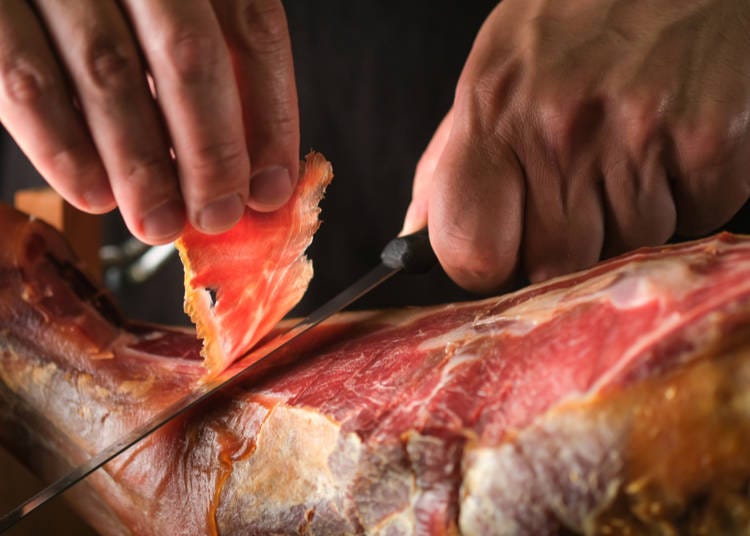
Prosciutto (cured raw Italian ham) is a popular side dish, used in Italy as an appetizer, for sandwiches, or even for certain salads, pastas, and soups.
In Italy, you will find dozens of different kinds of prosciutto, each with different flavors, textures, saltiness, and so on (but all unmistakably prosciutto).
Japan also sports its own prosciutto, but it's impossible even to compare the two. Prosciutto is usually a packaged side dish meat that you will find in the refrigerated section of many supermarkets. It's labeled as “raw ham” or, occasionally, “prosciutto,” but if you buy it expecting to taste something similar to the real thing, you will be amazed (for better or for worse).
Japanese prosciutto tastes nothing like the Italian one. It barely resembles the original, even in color or shape. It tends to be moister and with a much less powerful flavor.
As mentioned earlier, it's always important to remember that some dishes are adapted to the country that adopts them. Still, if you're Italian or know about Italian food, this may be your biggest disappointment, should you not know what to expect.
7. Eel
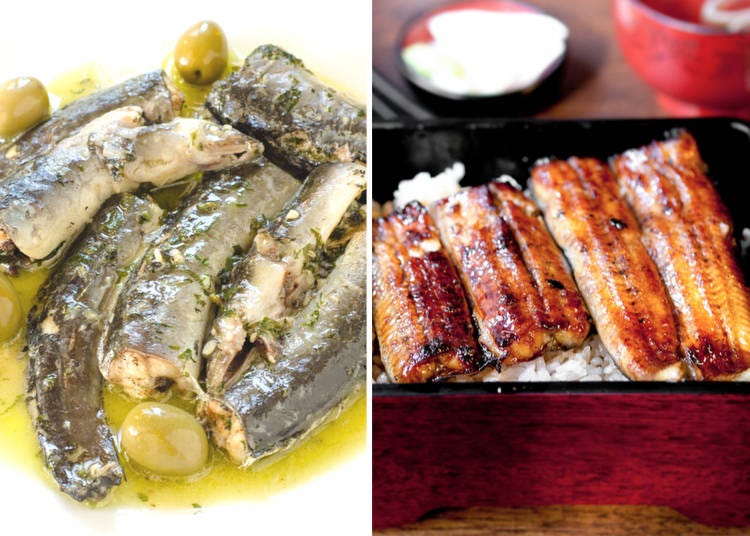
In both countries, eel is a very popular food. Japan has mastered the preparation of eel, serving it cooked in many different ways: grilled, steamed, boiled, fried, or even raw, as sushi or sashimi, as well as with different seasonings, or as a side dish or topping for rice.
In Italy, eel is a specialty, particularly in the southern regions, and it's one of the main dishes during the winter months (especially around Christmas and New Year's).
One of the most common ways to prepare eel in Italy is with a sauce of tomatoes from Naples, onions, and parsley. After separately cooking it in oil and white wine, this sauce is added to the eel.
Japan leads the world in the preparation of eel, and as an Italian, I feel that you may want to try something that you’re familiar with, but you should definitely give Japanese-style eel a try. You won't be disappointed.
8. Rice Croquette (Arancino)
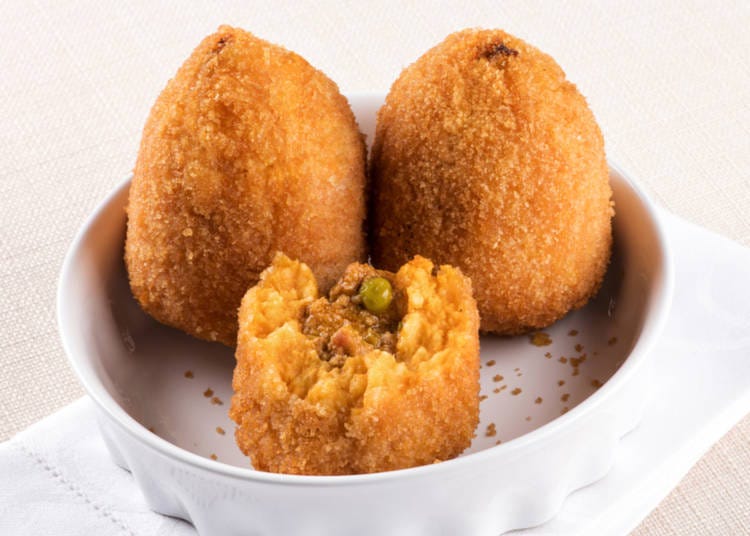
The arancino (Rice Croquette in Japan) is a staple dish of Sicily. While it’s believed that you can only taste the real thing in its region of origin, arancini (plural for arancino) and the similar but different 'suppli' can be found all over Italy.
In Italy, they are prepared with rice, saffron, and a meat sauce made with pork, onions, red wine, butter, black pepper, olive oil, green peas, tomatoes, and cacio cavallo (a variety of aged cheese).
The rice is mixed with the sauce. Cacio cavallo is also added as the “heart” of the arancino before covering it with a layer of bread crumbs and frying it.
In time, with the opening of more and more southern Italian restaurants and restaurant chains in Japan, this kind of rice croquette has become more and more popular. The Japanese version of this dish tends to be prepared with canned meat sauce mixed with rice, tomatoes, eggs, melting cheese, and parsley and covered in flour and bread crumbs before frying it. Very often, the rice croquette is served with tomato sauce on top.
9. Pasta with fish roe
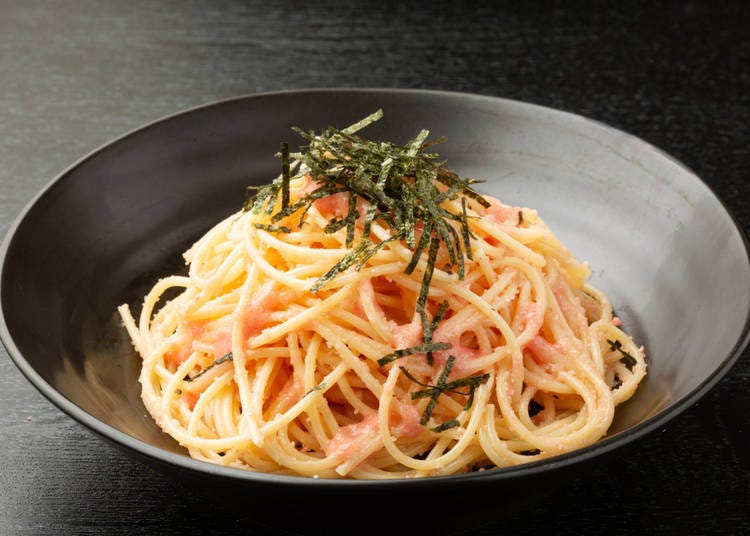
To conclude this list, I had to choose what I believe is the dish at the top of my favorite Italian-Japanese fusions.
Depending on the region in Italy, there are many pasta dishes prepared with fish eggs. One of the most popular is probably the one prepared with sea bass eggs. The sauce is made with garlic, onion, grated lemon peel, black pepper, parsley, and of course, fish roe.
While dishes with fish eggs are not unheard of in Italy, the Tarako Pasta (Pasta with cod roe) is a staple of Japanese cuisine. While probably inspired by Italian dishes, tarako pasta has its own identity and flavor, and it's a superb example of Italian-Japanese fusion cuisine.
The sauce is prepared with heavy cooking cream, fish eggs, butter, milk, and soy sauce, making the dish taste more Japanese than it will ever taste Italian but still maintaining aspects of Mediterranean cuisine.
We all have very different standards for food, and many of us tie food to our own heritage, which is probably even more true for Italian people. Yet whether you're Italian (or an Italian food lover), when visiting Japan, keep an open mind and enjoy the variety of Japanese-Italian food the country has to offer.
You may or may not like these dishes as much as you do the ones you're used to, but you may find yourself very pleasantly surprised if you give them a shot!
Related Articles
Lucio Maurizi is an automotive expert specializing in Japan's car scene and auto-tourism. With an MA in East Asian History from La Sapienza Università di Roma, he's a multi-talented contributor to travel platforms like LIVE JAPAN, Japan Travel, and GPlus Media. His Instagram account (50k+ followers) offers insider views on Japan's automotive culture. Lucio also actively collaborates with professional drivers and influencers and organizes can't-miss car events in Tokyo.
- Category
*Prices and options mentioned are subject to change.
*Unless stated otherwise, all prices include tax.
Popular Tours & Activitiess
Recommended places for you
-

Kobe Kippoh
Western-style Food
Kobe, Sannomiya, Kitano
-

GRILL MANTENBOSHI Shinjukuten
Western-style Food
Shinjuku
-
Appealing

Rukku and Uohei
Izakaya
Sapporo / Chitose
-
Goods

Yoshida Gennojo-Roho Kyoto Buddhist Altars
Gift Shops
Nijo Castle, Kyoto Imperial Palace
-

Hamburg Kashiwano
Western-style Food
Akihabara
-

Hikiniku no TORIKO Shibuya
Western-style Food
Shibuya
-
Ad

(Opening in Jan 2026) 'THE SUMO LIVE RESTAURANT HIRAKUZA GINZA TOKYO!' 5 Exciting Ways to Experience the World of Sumo!
-

Jujutsu Kaisen Takes Over JR East With a Wrapped Shinkansen This Winter
by: Guest Contributor
-
Ad

Preserving the Beauty of World Heritage Site Shirakawa-go for the Future Through Responsible Travel
-

First Japan Cherry Blossom 2026 Forecast Announced! Here's When & Where to See Sakura in Japan
-

Strawberries, Style, and Tokyo’s Coolest Neighborhood: Winter Afternoon Tea in Kichijoji
by: Guest Contributor
-
Ad

Discover the "Miraculous Forest" in the Heart of Tokyo: The Institute for Nature Study (9 Minutes from JR Meguro Station)
-

Popular Food at Universal Studios Japan
by: WESTPLAN
-

Dining in Kyoto: Best Restaurants for Kaiseki, Sushi, Cafes & More
-

Kaminoyama Onsen Guide: Best Things to Do in Japan's Samurai Town!
-

Born in the West, Raised in Asakusa: 3 Long-Established Restaurants Loved by Locals!
-

Top 5 Sports Bars Near Umeda Station: Where to Watch & Drink on Game Day
-

Keep up with your sports matches in Kyoto! Here are five sports bars in the Shijo Karasuma area in Kawaramachi.
- #best sushi japan
- #what to do in odaiba
- #what to bring to japan
- #new years in tokyo
- #best ramen japan
- #what to buy in ameyoko
- #japanese nail trends
- #things to do japan
- #onsen tattoo friendly tokyo
- #daiso
- #best coffee japan
- #best japanese soft drinks
- #best yakiniku japan
- #japanese fashion culture
- #japanese convenience store snacks













